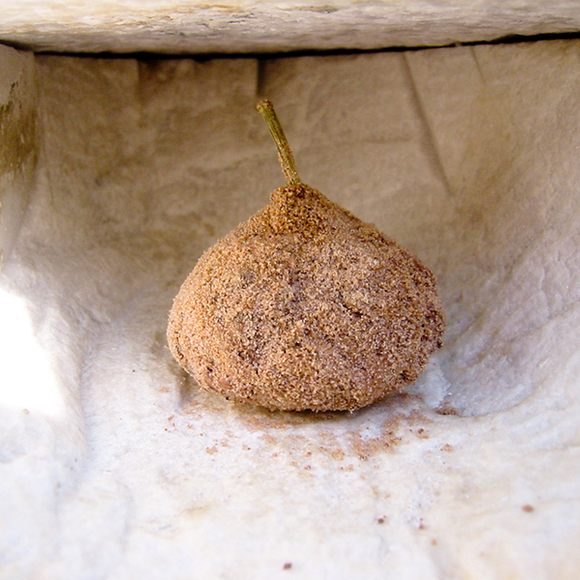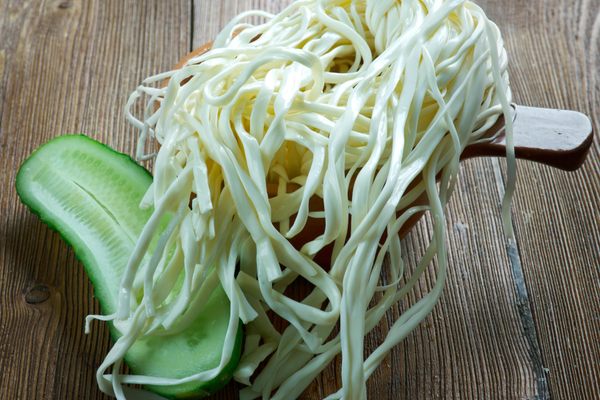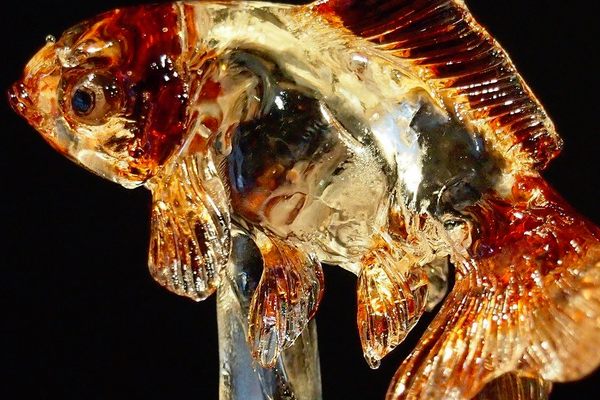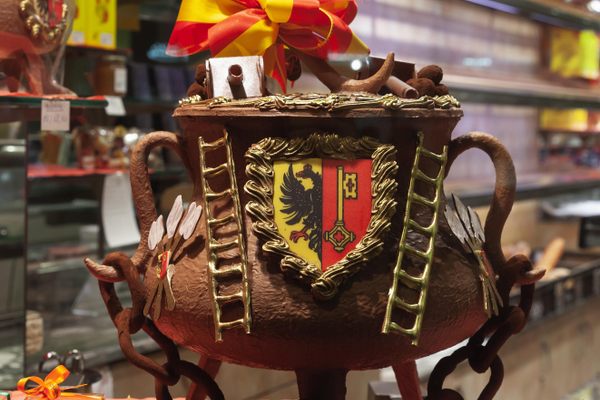Meats & Animal Products
Würchwitzer Mite Cheese
You'll love it almost as much as the critters clinging to the rind.
In the small town of Würchwitz, Germany, mites get locked in wooden boxes with a soft, unaged white cheese known as quark. As the mites feast, they ripen the cheese. But even after they’ve completed their work, these microscopic arachnids aren’t off the hook: Diners eat the cheese with the critters still covering the rind.
Only a single company in this village makes milbenkäse, or Würchwitzer mite cheese. While it’s a centuries-old practice, the art of making milbenkäse nearly disappeared until several townspeople made an effort to preserve it. Cheesemakers begin by seasoning balls or cylinders of dried quark with salt, caraway, and elderflower. Then, they let the mites feed on the pieces for about three months, regularly turning and aerating the cheese. Although the mites’ activity creates an unpleasant, ammonia-like smell, they helpfully excrete enzymes that ripen the cheese into a nutty, slightly bitter finished product.
Würchwitzer’s cheesemaking operation is the only organization sanctioned by the government to make milbenkäse, which is a legally protected name and tightly regulated due to the presence of live mites. Locals have certainly embraced this claim to fame: They built a statue of a cheese mite in the center of town.
Written By
 Alex Mayyasi
Alex Mayyasi
Sources
- www.atlasobscura.com/places/cheese-mite-memorial
- www.fondazioneslowfood.com/en/ark-of-taste-slow-food/wurchwitzer-mite-cheese/
- books.google.com/books?id=hnw3DwAAQBAJ&pg=PA240&lpg=PA240&dq=W%C3%BCrchwitzer+mite+cheese&source=bl&ots=ES347LbHbh&sig=SMgJrMtqeXKrSA2k95vrBrCnqPU&hl=en&sa=X&ved=0ahUKEwjQxID6vtPbAhWmtlkKHerUCaEQ6AEIYDAM#v=onepage&q=W%C3%BCrchwitzer%20mite%20cheese&f=false
- culturecheesemag.com/blog/cultures-believe-not-milbenkase
- www.milbenkaese.de/
- www.nytimes.com/2015/06/25/business/energy-environment/bridging-the-cheese-gap-food-trade-united-states-european-union-ttip.html
- www.cheese.com/quark/
- www.asm.org/index.php/general-science-blog/item/4433-the-natural-history-of-cheese-mites



















